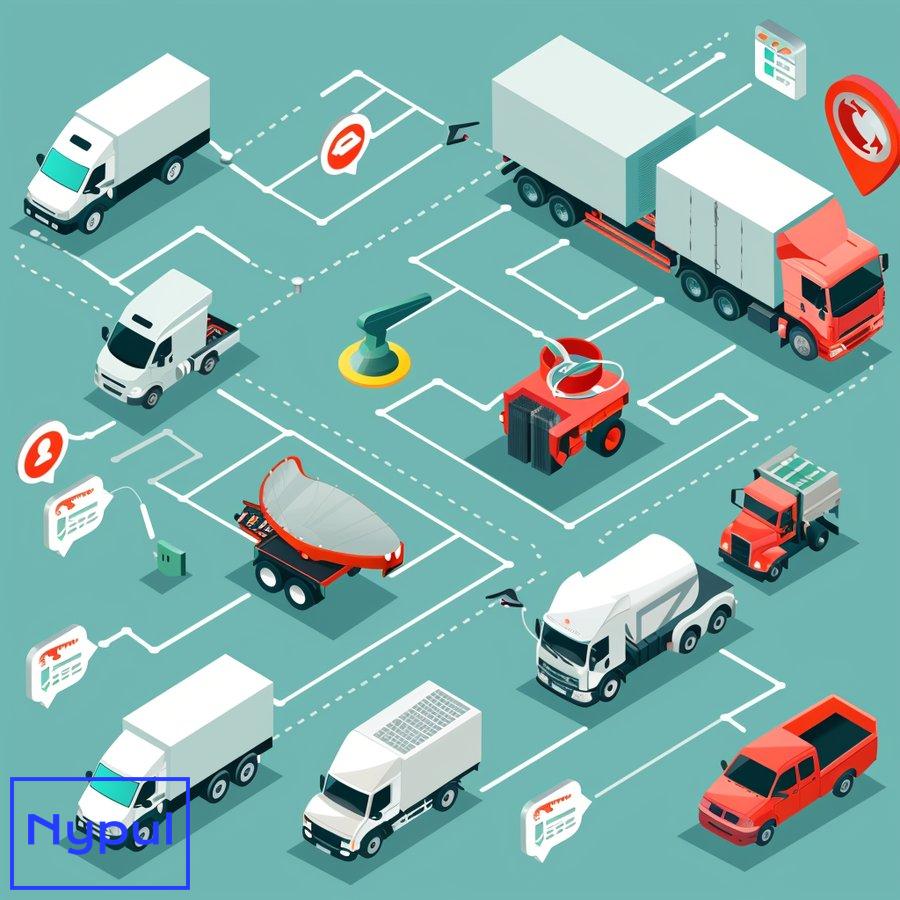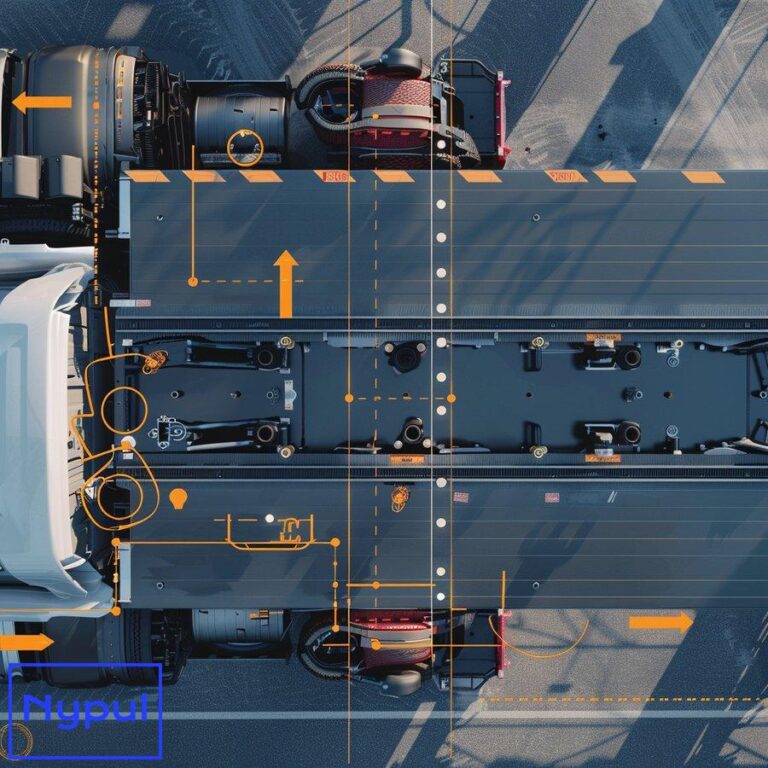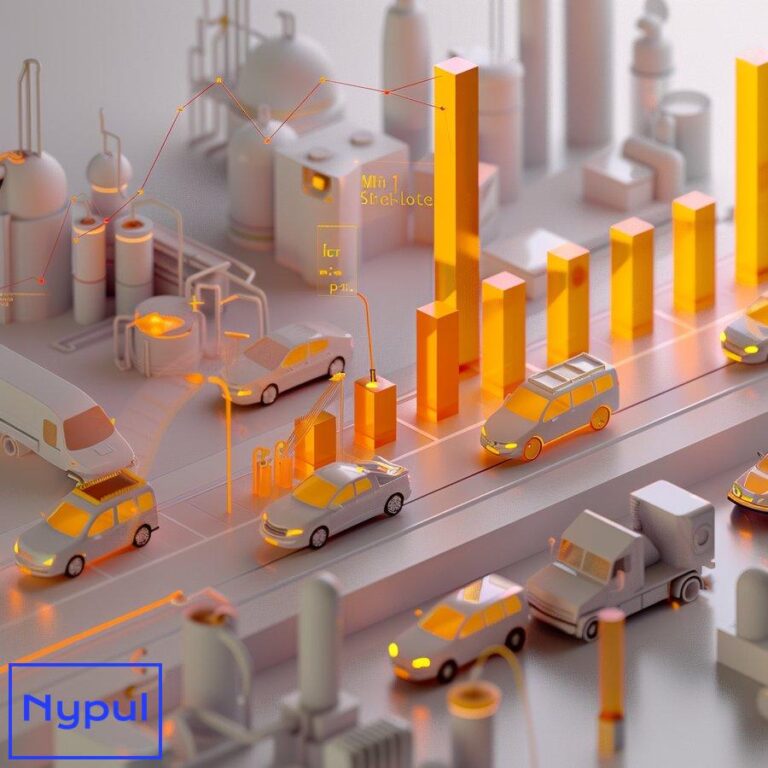What Is the Role of Telematics in Fleet Management
What are the key features and benefits of telematics in fleet management?
Telematics systems have become essential in modern fleet management, offering a suite of features that significantly enhance operational efficiency, safety, and cost-effectiveness.
****Key Features of Telematics Systems
-
Real-Time GPS Tracking: This allows fleet managers to monitor vehicle locations and movements, providing insights into route efficiency and driver behavior.
-
Vehicle Diagnostics: Telematics systems can monitor the health of vehicles by collecting data on engine performance, fuel consumption, and maintenance needs. This enables proactive maintenance scheduling and helps avoid costly breakdowns.
-
Driver Behavior Monitoring: By analyzing driving patterns such as speed, braking, and acceleration, telematics systems can identify risky behaviors and provide feedback for improvement.
-
Fuel Management: Telematics can track fuel consumption in real-time, helping to identify inefficiencies and reduce costs associated with fuel waste.
-
Geofencing: This feature allows fleet managers to set virtual boundaries for vehicles. Alerts are triggered when vehicles enter or exit these zones, enhancing security and operational control.
****Benefits of Implementing Telematics
-
Increased Efficiency: Telematics provides data that helps optimize routes and schedules, reducing travel time and improving service delivery.
-
Cost Reduction: By monitoring fuel usage and vehicle health, telematics can lead to significant savings on fuel costs and maintenance expenses.
-
Enhanced Safety: Continuous monitoring of driver behavior contributes to safer driving practices, which can lower accident rates and insurance premiums.
-
Improved Compliance: Telematics systems assist in adhering to regulatory requirements by providing necessary documentation for inspections and audits.
-
Data-Driven Decision Making: The wealth of data collected allows fleet managers to make informed decisions that enhance overall fleet performance.
How does telematics compare to similar offerings in the market?
When comparing telematics systems to other fleet management solutions, it’s crucial to understand their distinct functionalities and advantages.
| Feature/Aspect | Telematics Systems | Fleet Management Software |
|---|---|---|
| Data Collection | Real-time vehicle data | Comprehensive management tools |
| Focus | Vehicle tracking & diagnostics | Overall fleet operations management |
| Integration | Often integrates with other software | Can include telematics as a module |
| User Interface | Typically more technical | User-friendly dashboards |
| Cost | Subscription-based per vehicle | Varies based on features |
Telematics systems primarily focus on collecting real-time data from vehicles, while fleet management software encompasses a broader range of functionalities including scheduling, billing, and inventory management. Both systems can work synergistically; for instance, telematics data can enhance the decision-making capabilities of fleet management software by providing critical insights into vehicle performance.
What are the most common use cases for telematics?
Telematics technology finds application across various industries due to its versatility in enhancing operational efficiency. Common use cases include:

****Logistics and Transportation
Telematics is extensively used in logistics to optimize routing, monitor delivery times, and improve customer service. Real-time tracking allows logistics companies to provide accurate ETAs to customers.
****Construction
In construction fleets, telematics helps monitor equipment utilization and maintenance needs. This ensures that machinery is operating efficiently and reduces downtime due to mechanical failures.
****Public Transportation
Telematics systems are employed in public transit to manage schedules effectively, monitor vehicle conditions, and ensure passenger safety through driver behavior analysis.
****Emergency Services
For emergency services like ambulances or fire trucks, telematics provides crucial information about vehicle location and status during emergencies, enabling faster response times.
****Rental Services
Vehicle rental companies utilize telematics for tracking vehicle usage patterns, managing maintenance schedules, and preventing theft through real-time location tracking.
How can customers get started with telematics?
Getting started with telematics involves several steps that ensure a smooth integration into existing fleet operations:
-
Assess Needs: Identify specific challenges within your fleet that you aim to address with telematics. This could range from improving fuel efficiency to enhancing driver safety.
-
Choose a Provider: Research various telematics providers based on their offerings, customer reviews, support services, and pricing structures.
-
Select Features: Determine which features are essential for your operations—such as GPS tracking or driver behavior monitoring—and ensure the chosen provider offers these capabilities.
-
Implementation Plan: Work with your provider to create an implementation timeline that includes hardware installation (if needed), software setup, and staff training.
-
Training: Conduct training sessions for your team to familiarize them with the new system. Ensure they understand how to utilize the data effectively for decision-making.
-
Monitor Performance: After implementation, continuously monitor the system’s performance against your initial goals. Adjust strategies as necessary based on the insights gained from the data collected.
What are the pricing options and licensing models for telematics?

Pricing models for telematics solutions vary widely based on features offered, number of vehicles tracked, and service agreements. Below are common pricing structures:
****Subscription-Based Pricing
Most providers operate on a subscription model where businesses pay a monthly fee per vehicle tracked. Prices typically range from $15 to $40 per month depending on the features included.
****One-Time Fees
Some providers may charge one-time fees for hardware installation or initial setup costs. These fees can range from $50 to $200 per vehicle depending on complexity.
****Tiered Pricing Models
Certain providers offer tiered pricing plans based on the number of vehicles or additional features desired. Larger fleets often benefit from reduced rates per vehicle due to economies of scale.
****Custom Pricing
For businesses with unique needs or larger fleets requiring extensive customization or integration with existing systems, custom pricing options are available through negotiations with providers.
Understanding these pricing models allows businesses to select a solution that fits their budget while maximizing return on investment through improved operational efficiencies.
How does telematics integrate with other tools and platforms?

Integration capabilities are a significant advantage of modern telematics systems. They can seamlessly connect with various tools and platforms:
****Fleet Management Software
Telematics data can be integrated into comprehensive fleet management solutions that encompass scheduling, billing, maintenance tracking, and compliance reporting. This integration provides a holistic view of fleet operations.
****Navigation Systems
By integrating GPS data from telematics with navigation applications, drivers receive real-time traffic updates and optimized routing suggestions based on current conditions.
****Maintenance Management Systems
Telematics can feed diagnostic information directly into maintenance management platforms. This ensures timely alerts for required services or repairs based on actual vehicle performance metrics.
****Insurance Platforms
Some insurance companies offer discounts for fleets utilizing telematics due to improved risk management capabilities. Integrating telematics data can help insurers assess risk more accurately based on driving behavior analytics.
The ability to integrate telematics with other platforms enhances its value proposition by creating a more interconnected approach to fleet management.
What are the system requirements and compatibility considerations for telematics?
When implementing a telematics system, it’s essential to consider both hardware and software requirements:
****Hardware Requirements
-
Telematics Device: Each vehicle requires a compatible telematics device capable of collecting relevant data (e.g., GPS location, diagnostics). These devices may need professional installation depending on complexity.
-
Connectivity Options: Ensure reliable cellular connectivity (e.g., 4G LTE) is available in your operational areas for real-time data transmission.
****Software Requirements
-
Cloud-Based Platform: Most modern telematics solutions operate via cloud-based platforms that require stable internet access for monitoring dashboards.
-
Mobile Compatibility: Many providers offer mobile applications for easy access to data on-the-go; ensure compatibility with your team’s devices (iOS/Android).
Compatibility considerations also extend to existing fleet management tools; it’s crucial that new systems integrate smoothly without disrupting current operations or workflows.
How can customers get support and troubleshoot issues with telematics?
Support options vary by provider but generally include:
****Customer Support Channels

Most providers offer multiple support channels such as phone support, email assistance, or live chat options available during business hours or 24/7 depending on the service level agreement (SLA).
****Online Resources
Many companies maintain extensive online resources including FAQs, user manuals, video tutorials, and community forums where users can find answers or share experiences related to common issues faced during implementation or usage.
****Dedicated Account Managers
Some premium services include dedicated account managers who provide personalized support tailored specifically towards understanding customer needs over time—ensuring ongoing satisfaction with the product offered.
Customers should familiarize themselves with their provider’s support structure upon onboarding so they know how best to address any potential issues quickly as they arise within their operations utilizing telematic solutions effectively over time.
What are the latest updates and improvements in telematics technology?
The field of telematics is continuously evolving as technology advances:
****Enhanced Data Analytics
Recent improvements focus heavily on big data analytics capabilities within telematic systems allowing fleets not only real-time monitoring but also predictive insights into future performance trends—enabling proactive decision-making strategies based upon historical patterns observed over time across various metrics monitored regularly via these systems implemented successfully within organizations operating fleets today effectively managing their resources accordingly moving forward together towards success!
****Integration of AI Technologies
Artificial intelligence is increasingly being integrated into telematic solutions enabling advanced driver assistance systems (ADAS) which enhance safety measures through real-time feedback mechanisms about driving habits while simultaneously optimizing routes dynamically based upon changing conditions encountered throughout daily operations conducted regularly across diverse environments encountered routinely by drivers working diligently day-to-day ensuring efficiency remains paramount always!
****Improved User Interfaces
Modern user interfaces have become more intuitive allowing users greater ease navigating through complex datasets presented visually appealing formats making it easier than ever before glean actionable insights quickly efficiently without unnecessary delays hindering productivity levels achieved consistently throughout organizational efforts aimed achieving excellence across all facets involved managing fleets successfully navigating challenges faced daily effectively!
These advancements signify a promising future for fleets adopting innovative technologies enabling them achieve operational excellence while remaining competitive within industry landscapes continually evolving adapting accordingly!
How can customers provide feedback and contribute to product development?
Customer feedback plays an integral role in shaping future developments within any product offering:
****Surveys & Feedback Forms
Most providers actively solicit customer input through surveys after implementation phases concluding ensuring satisfaction levels remain high while identifying areas needing improvement further enhancing overall user experience enjoyed by all stakeholders involved utilizing these technologies effectively!
****User Community Engagement
Many companies foster user communities where customers share experiences insights collectively contributing towards product improvements collaboratively working together towards common goals benefiting everyone involved ultimately leading towards better outcomes achieved consistently over time!
****Beta Testing Programs
Some organizations invite select customers participate beta testing programs allowing them preview upcoming features provide direct feedback before official releases occur ensuring end-users’ needs adequately addressed fully meeting expectations established previously communicated clearly throughout development processes undertaken diligently ensuring success achieved together moving forward collaboratively towards brighter futures ahead!
In conclusion, leveraging the power of telematics within fleet management presents an opportunity not only optimize operations but also enhance safety reduce costs significantly improving overall performance levels realized consistently across diverse industries relying heavily upon transportation logistics frameworks established firmly rooted solid foundations built trust reliability proven success stories shared widely among peers alike fostering growth innovation continuously evolving adapting swiftly changing landscapes encountered regularly!






